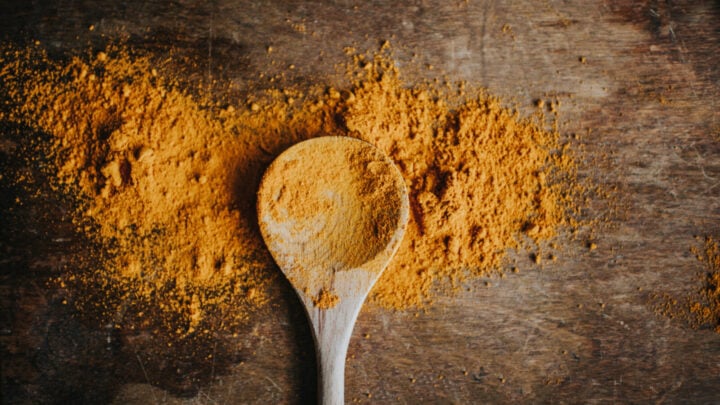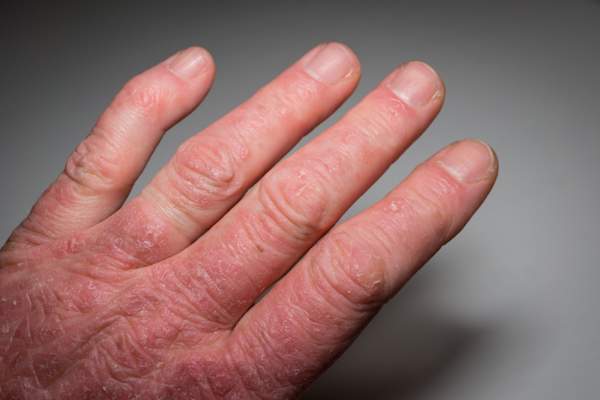When we think about the sore, swollen and stiff joints of rheumatoid arthritis, we often associate those with older age. And while it’s true that older adults are much more likely to be diagnosed with the condition, that doesn’t mean younger adults can’t develop it.
Between 1 and 3% of adults are diagnosed with rheumatoid arthritis. One study found that about 8 in 100,000 young adults between the ages of 18 and 34 have been diagnosed with rheumatoid arthritis. So while it’s rare, it’s still possible and it can bring a lot of challenges with it.
But that doesn’t mean young adults have to suffer through the rest of their lives in pain. To better understand rheumatoid arthritis and how young adults who are diagnosed with it can still live an active, normal life, we spoke with rheumatologist Joshua Hedrick, MD.
Exploring the cause
According to Dr. Hedrick, there’s nothing really any different about rheumatoid arthritis in young adults versus their older counterparts; it’s pretty much the same condition with the same symptoms and its source is the same as well.
“We generally think there’s a genetic predisposition that requires one or two environmental triggers to really start,” Dr. Hedrick says. Smoking is a risk factor for developing rheumatoid arthritis while second-hand smoke may also be a risk factor.
A different and yet unidentifiable bacteria in the gut biome could also have some influence, meaning a healthier diet could make some people less prone to the condition.
Some studies report there appears to be something of a genetic component to rheumatoid arthritis, suggesting it might be hereditary. But as far as knowing whether or not you’re predisposed, Dr. Hedrick acknowledges it’s mostly a guessing game.
Understanding rheumatoid arthritis symptoms
It’s important to understand, Dr. Hedrick notes, that there isn’t any significant difference between rheumatoid arthritis symptoms in older adults and those in younger adults. “Older adults, though, may have other comorbidities that may compound things,” he adds.
Older adults are also more prone to having pre-existing joint issues even before the onset of rheumatoid arthritis. Dr. Hedrick points out, “They’re more likely to have the wear-and-tear of osteoarthritis, so that pain may persist despite any rheumatoid arthritis treatment they receive.”
Those painful, inflamed joints
Typically, rheumatoid arthritis is a slowly progressive autoimmune condition, Dr. Hedrick says, that hones in on the joints of your body. “It usually affects the smaller joints, like the knuckles and other joints in your hand and then your toes and feet.”
“The entire premise of rheumatoid arthritis is your body is making inflammation in the joints,” he adds. “And inflammation accumulates when the body is at rest.”
Often, symptoms are worst first thing in the morning or later night. “You’ll wake up with stiffness or even swelling in those joints and that improves a little bit as the day goes on and those joints loosen up a bit,” he says.
Still, that pain and inflammation can be debilitating, even for young adults, without proper care and treatment. And, fortunately, there are ways to mitigate the stiffness and pain.
Treating rheumatoid arthritis in young adults
As with symptoms, there’s not a big difference between the treatment of rheumatoid arthritis in young adults and older patients. Though, Dr. Hedrick notes, that the comorbidities older patients have may sometimes limit some treatment regimens. The younger and healthier you are, the more options you probably have for treatment.
“The basic principles of managing rheumatoid arthritis are restoring functionality, manage symptoms and to control the long-term aspects of inflammation,” he says. “That inflammation can potentially injure the joint if it’s uncontrolled for years.”
For most young adults, treatment involves a combination of medication and monitoring of symptoms, checking every one-to-three months to make sure there’s a positive impact on the joint stiffness and pain. If there’s not, then trying out different medications are explored until the right combination is found.
What medications can help?
Dr. Hedrick says that often at the onset of rheumatoid arthritis, the steroid prednisone will be prescribed first to help the patient deal with pain and inflammation. But, he says, it’s usually a quick fix.
“A lot of times, patients won’t get full relief from over-the-counter inflammatory meds like Advil or Aleve,” he says. “So prednisone is sort of a band aid for rheumatoid arthritis, a temporary measure while we try to find better long-term treatments.
Methotrexate is the primary first treatment that doctors will usually try with new rheumatoid arthritis patients, Dr. Hedrick says. “It’s been around the longest and it’s the gold standard first-line medicine for rheumatoid arthritis,” he says. Patients take a weekly dose.
If patients don’t respond to that or there’s an underlying health reason to forgo Methotrexate, he says, the next option might include hydroxychloroquine sulfate (also known as Plaquenil). But for younger patients, he says the next step may be other choices.
Options like adalimumab (better recognized under the brand name Humira) and etanercept (sold under the brand name Enbrel). “These medications block a particular part of the inflammatory process so many patients respond well to that,” he adds.
But even if initial responses are good, part of the reason for the constant symptom monitoring is to ensure that those symptoms remain controlled and another adjustment isn’t needed.
Understanding the emotional impact of rheumatoid arthritis
One of the underrated aspects of a rheumatoid arthritis diagnosis for a young adult, though, is the emotional impact. After all, as Dr. Hedrick notes, it’s a chronic medical condition, something most patients will be dealing with the rest of their lives. And that can be overwhelming for someone in their late 20s or early 30s.
“It is difficult for some young adults to accept the fact that they’ll be living with a life-long illness,” Dr. Hedrick says. “But it’s one that’s manageable with the right treatment and with care.”
He says that one thing younger patients may face initially is more frequent visits to monitor symptoms, track the effectiveness of medicine and, in general, make sure they’re on the right track.
“Younger adults are also very interested in their medical condition, especially something that will affect them for decades to come,” he adds. “And that can mean a lot of good, complex questions that require several follow-ups to fully explain. So part of any counselling for the patients is between them and their rheumatologist.”
Dr. Hedrick also notes that he’s had several young rheumatoid arthritis patients who have tapped into online communities which provide a great pillar of support and chances to do their own research, something he encourages.
But the primary message he hopes young adults understand with a rheumatoid arthritis diagnosis is that you can live a mostly normal life. “With a little work and consultation, we’re often able to find a medication regiment that can return them to normalcy,” he says.
The goal, he says, is always a pain-free, inflammation-free lifestyle, even if takes several months or even a few years to establish. “That’s always the goal we’re working towards,” he says, “for rheumatoid arthritis not to be affecting their everyday life.”
https://health.clevelandclinic.org/how-rheumatoid-arthritis-affects-young-adults/







:max_bytes(150000):strip_icc()/cinnamon_annotated--c781f356a4444083ba40bfee334d78e2.jpg)
:max_bytes(150000):strip_icc()/honey_annotated-a58493c6a67b4c08a2fb5de41cd42a54.jpg)
:max_bytes(150000):strip_icc()/GettyImages-1155866998-b24b9dd889734de1b78ecbb950564d7f.jpg)





